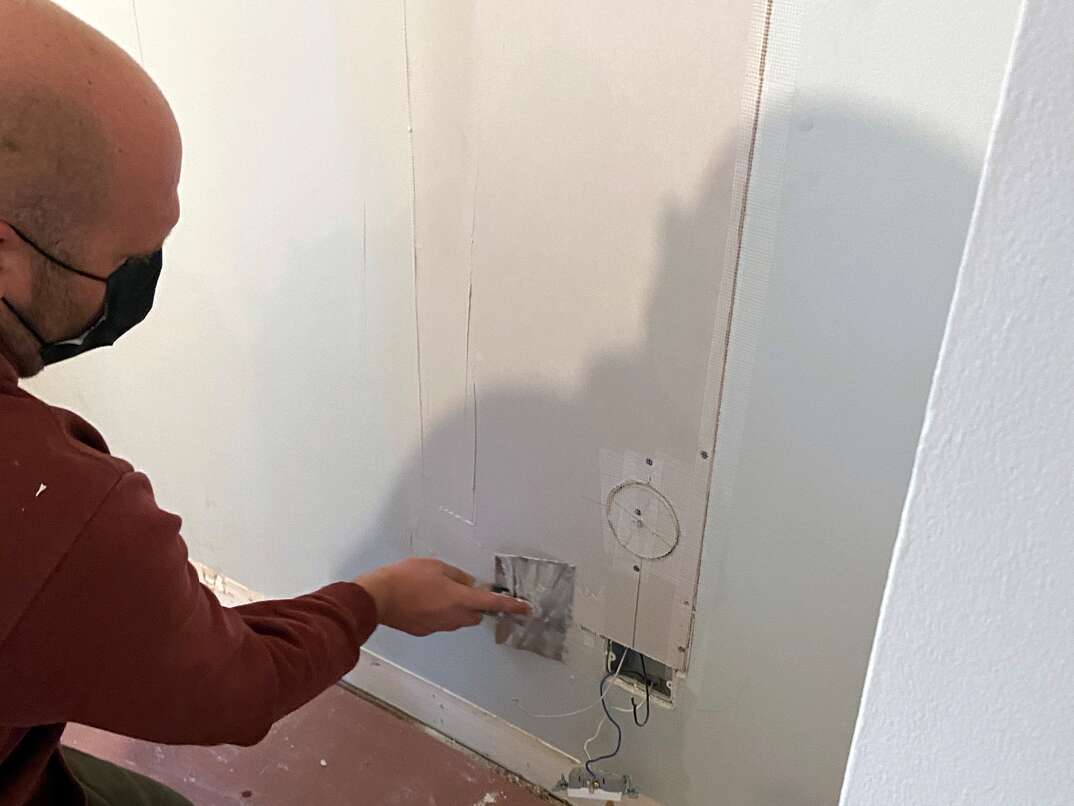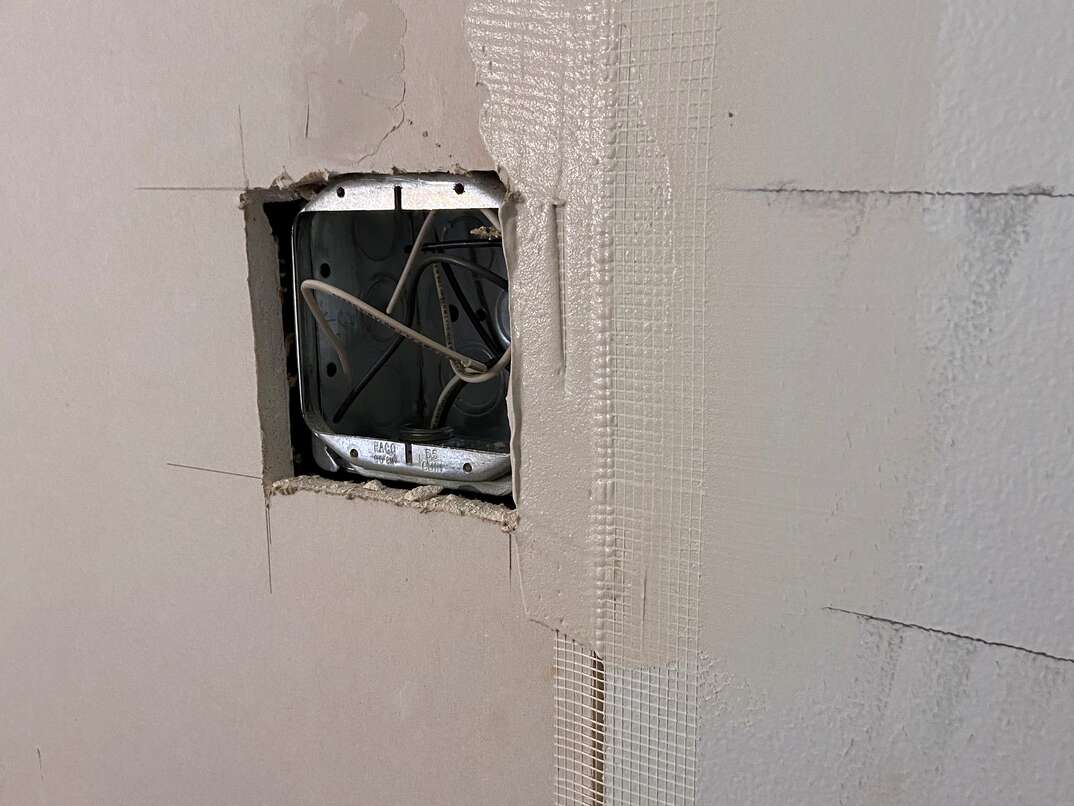How to Finish Drywall: Taping, Mudding and Sanding

Congratulations on finishing your drywall hanging, but that doesn’t mean it’s time to just hang out — you’re not finished until you’ve finished. When the drywall finishing process is done, the wall surface will be perfectly smooth and the joints will be invisible. That’s where taping and mudding comes in.
This May Also Interest You: How to Fix a Hole in the Wall Like a Pro
Follow our eight-step guide to finishing your drywall.
Step 1: Gather Your Tools and Materials
Have these tools on hand for finishing your drywall:
- A drywall knife in 12-inch, 6-inch and 4-inch sizes
- A drywall taping compound tray
- A utility knife
- A cordless drill
- A sanding pole and sanding sheets
- A drywall sanding sponge
- Joint compound (The general rule for drywall mud is to estimate 0.053 pounds of mud per square foot of drywall, so you would multiply 0.053 by the total number of square feet you found in step one to determine how much you need.)
Step 2: Prepare the Surface
- Make sure all your screw holes are driven down below the paper surface.
- If you have some that are not fully recessed, make sure you drive them in a little more.
- If you have any spots with torn paper or drywall, cut them off with a utility knife.
Step 3: Apply the First Mud Coat
- Start by scooping some mud into a compound tray and with a 6-inch taping knife apply a smooth, thin layer over the drywall joint.
- Immediately press the drywall tape into the mud centered over the joint.
- Hold the tape in place with one hand while pulling the taping knife over the tape.
- Working from the middle until the end of the joint, applying just enough pressure to squeeze a little compound out from under the tape.
- Then apply another thin layer of compound to cover the tape and fill the joint.
- You should still be able to see the tape clearly through the mud at this point.

Step 4: Finish the Inside Corners
- Following the process you used with the tape, finish the inside corners where walls meet.
- Make sure you apply the tape folded or use a corner bend.
- Apply a thin layer of compound over the tape or bend as you did with the tape process.
Step 5: Finish the Outside Corners and Screw Heads
- For the outside corners with the metal beads, just apply a thick layer of compound.
- Then apply a small amount of compound over each screw head and smooth the surface.
- Let the compound dry overnight.
Step 6: Apply the Fill Coat
- Lightly sand the dried compound to remove any ridges and bumps.
- Then use a 12-inch knife to spread another layer of compound over the joints and feather the edges.
- Once this has dried, lightly sand again.
Step 7: Apply the Finish Coat
- This final application should be a very light layer of compound.
- It should create a smooth surface.
Step 8: The Last Sand
- Let all the layers of compound dry thoroughly, then sand until you have a smooth surface.
- After wiping your walls clean of dust, you’re now ready to paint or wallpaper your finished wall.
Since we’re all home now more than ever, being prepared for unexpected home repairs with a plan from HomeServe is important. Having a plan in place gives you the peace of mind knowing that you can simply call our 24/7 repair hotline for covered breakdowns. See what plans are available in your neighborhood.


